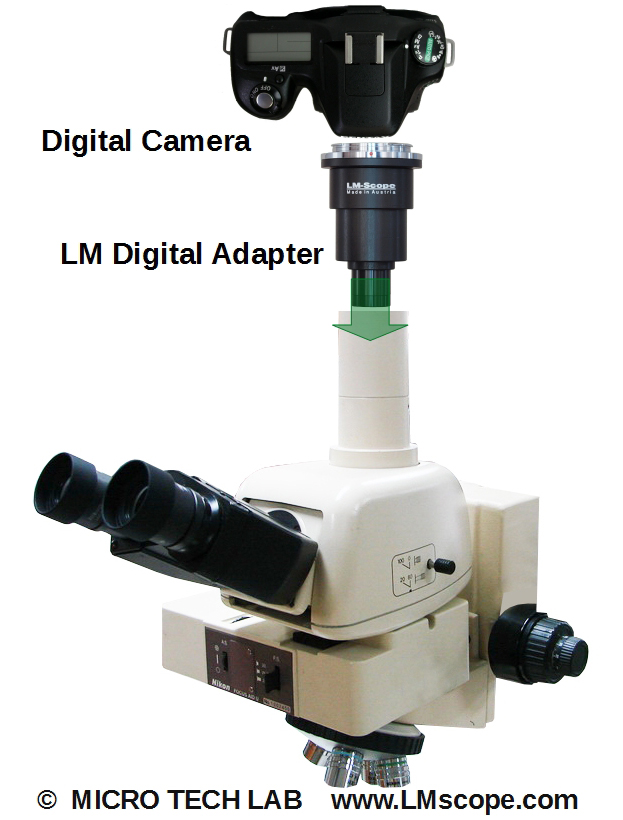

LM tube adapter: a convenient way to attach DSLR and DSLM cameras to Nikon’s MM60 measuring microscope
Nikon’s MM series (MM stands for measuring microscope) comprises a range of durable, robust instruments that are suitable for a variety of applications. The Nikon MM60 is a large microscope that has a built-in linear glass scale for Z-axis measurement and a 3-step focus drive (coarse/medium/fine).
The MM60 is equipped with a trinocular head with C-mount port. The integrated optical system of the C-mount port with factors of less than 1x reduces the field of view, which is necessary for cameras with small sensors. Previously, when cameras with full-frame or APS-C sensors were used to take pictures through a microscope – provided it was even possible to attach the camera to the microscope – the image quality was usually poor. However, with our new LM tube adapter, which has a plan-achromatic optical system, it is now possible to attach large sensor DSLR and DSLM cameras to the MM60 to capture images of outstanding visual quality. All you need to do is remove the integrated 0.5x C-mount lens and replace it with our plan-achromatic adapter solution. This way, you get a highly functional microscope/camera combination – especially when you use Nikon’s acclaimed CFI lenses in the objective turret (available in different formats).

Along with a variety of accessories, such as six different table versions with a heavy duty cast base, a shutter in the stand for transmitted light illumination, and different lamp housings, the Nikon MM60 measuring microscope offers tremendous flexibility.
Photography:
Fitting the microscope to digital single-lens reflex (DSLR), mirrorless interchangeable-lens cameras (MILC ), digital single-lens mirrorless (DSLM) or C-mount cameras is easy with our LM digital SLR adapters, which feature a plan achromatic optical system. Our products make it possible to capture top-quality microscope images. To help you select the adapter that is right for your camera, we have set up an online configurator on our website. You can also email us – ideally with attached photographs of your microscope.
Modern DSLR and single-lens mirrorless (DSLM) offer the latest technology and are generally very well suited for microscopy applications. Most of them can be controlled remotely via PC/Mac. Because of their high sales volumes, they offer an excellent price/performance ratio compared to special-purpose microscope cameras.
Features of top DSLR and single-lens mirrorless cameras (DSLM):
- Large, powerful full-frame sensors (36 x 24 mm)
- Sensor resolution of 61 megapixels or 240 megapixels with Pixel Shift technology
- High light sensitivity (ISO 400,000+)
- Extensive dynamic range (up to 15 aperture stops/f-stops)
- Short exposure times (1/8000 second) up to 1/32,000 seconds using the digital shutter
- 4K Ultra HD or 8K Ultra HD video function
- Live video capture on external monitors in ultra HD quality
In most cases, these cameras are significantly more powerful than microscope cameras with smaller sensors (1/2" or 2/3"). On our website you will find our current camera recommendations and a camera ranking which is specifically tailored to microscopy applications.